“This poetry is a picture or graph of a mind moving… My life has been spent in the midst of heroic landscapes which never overwhelmed me and yet I live in a single room in the city – the room a lens focusing on a sheet of paper. Or the inside of your head. How do you like your world?†– Phillip Whalen, “Since you ask me – A press release,” October 1959
“FORM IS NEVER MORE THAN AN EXTENSION OF CONTENT†– Charles Olson, “Projective Verse,†by way of Robert Creeley.
“The two halves are:
the HEAD, by way of the EAR, to the SYLLABLE;
the HEART, by way of the BREATH, to the LINEâ€
— ibid
I take it that we have assumed a solution to the problem of content just as poets prior to 1900 had assumed a solution to form. That is a dumb statement but it’s a place to start. Certainly Keats was never satisfied with the forms he had been handed and wrote sonnets about how shitty the sonnet form was and broke rhyme schemes apart like a man intent on splitting the atom and came up with his great new creation in the late Odes, before that tried the Spenserian stanza, tried ottava rima, tried the couplet of Dryden and Pope, tried Miltonian blank verse, was trying drama at the time of his death, sort of by accident stumbled upon an expository letter form that had never been done before and has never been equaled since; was on a constant quest to reshape the power and thrust of his individual lines and moved the active verbs around as I say like a scientist to see what it would do to be here or there on the line, in the original Hyperion for example gave the heave to the front of the line, front-loaded lines with super-active words recognizing Milton’s great achievement and mastered it, out-Miltoned Milton if you will, and developed the idea further to use in later work (front-loaded too with trochees to further accentuate the opening stress):
“Deep in the shady sadness of a valeâ€
But then too constantly played with the syllabic interplay of vowel sounds within and between lines, something he had seen early on in the forgotten boy-poet Chatterton (Chesterton?), and again far outstripped his teacher,
“Of candied apple, quince, and plum, and gourd; (tart)
With jellies soother than the creamy curd, (soft)
And lucent syrops, tinct with cinnamon; (sharp – piquant)
Manna and dates, in argosy transferr’d†(sumptious)
— Eve of St. Agnes
And learned use of caesura/enjambment to free line from sing-song heave from Leigh Hunt, but again had the idea to move caesura around to avoid Hunt’s clumsy “pouncing.â€
All this to say that form was already something superior poets had become dissatisfied with as early as 1800, but it took till Pound and Williams (and H.D.) to come out in AMERICA and say and do something totally different, to very consciously free poetry from the restrictions of received form and fall much closer to Olson’s idea (gotten largely from Pound/Williams) and Whalen’s perhaps even more radical and less dogmatic one. So you can have a poetry that says
so much depends on
the apparition of these faces
a red wheel
barrow/petals
on a wet, black bough
which might be a simple declarative sentence chopped up into fragments. As Lew Welch once joked, “Poetry is just writing that doesn’t go all the way to the end of the page.†Or as Tina asked this morning, having to go teach freshman english class, “what is poetry?†We know it’s not that. But we end up talking about what it’s not to get at what it is. We know it’s not prose. How we know is that you can translate prose fairly readably without too many complaints but you can’t ever satisfactorily translate poetry. You end up losing sense, meaning, rhyme, rhythm, musical flow of the language, so you therefore conclude it’s a special kind of writing concerned with all of those things in a more heightened sense than prose is, and you also get into poetry’s way of condensing (dichten = condensare) which might or might not be at work but usually if it’s any good is.
But why I say we seem to have “solved†the problem of content is that so much of poetry today seems caught up in an endless pursuit of form, a pursuit of new form, form to distinguish my poetry from yours, yours from mine, Flarf, langpo, pomo, even a cat I remember on the SUNY poetics listserv who’d post chunks of computer programming language filtered through some program or other and people would get really angry at getting these vast binary-code like e-mails and other people would defend him and say no he’s a genius and even (because he was/is Jewish) would get into these debates about Anti-semitism and anti-intellectualism and things like that. But what is the content, what would Shahn say and what would anyone say if you asked. Is it dumb or obvious to ask or is it valid to ask what the content of a Flarf poem is (when the content is whatever comes up in a Google search) or the content of a “language poem†(though I’m still not sure such a thing exists) where the content is whatever the reader brings to it, i.e. the charge of particular words or sense fragments and connections between them.
I take Creeley on the other hand to be saying, essentially, I see a thing and my seeing it dictates exactly how the poem MUST be written, the shape of the woman is the shape of the poem, the shape of the distance between us, the shape and the energy of the speech and the way the light hits and the shadow and silence, all of it as accurately as I can get it down in language to give the sense of that to a listener or “experiencer†of the poem in the moment of experiencing it not exactly as I had it but as close as possible or to give an equivalent hit in a different way. Which does not seem so very radical or revolutionary to me, in fact has a sort of classical feel to it (as I compare Derrida’s “hedgehog†to Olson’s poet being out in an “open field†I am convinced again that we are all saying essentially the same thing about poetry everywhere at all times). But try writing a poem using only the text message function of your cell phone. Try typing one in an e-mail, writing it with finger on the dirt on a windshield, scraping it on a bathroom wall or writing in lipstick on a mirror (Piper Laurie in The Hustler) – that we would even think to do so says so much about where we are as a culture and time different and advanced perhaps but certainly desperate but that is a topic for another essay.
NOTES
The Olson statement on syllable/line seems to refer solely to sound in poetry whereas the Creeley “form… content†is more encompassing but somehow exact as his poetry is and the Whalen “graph of mind moving†strikes me as ultimately freer but this might also be the influence of his poetry working in my mind as I think this.
…
I am aware of the inherent weakness of my statement re. “solved content†but it is merely a place to start and the more I think about it an intriguing one. Just consider how almost embarassing it is to even admit to having content… e.g. in the Subterraneans a novel “about†sex/gender/race in a really sincere but also sexist/racist way and imagine even doing that now without being ironic or distanced or funny or postmodern. Thus one is given to approach this problem by skewing representational lines and almost of supreme importance becomes the question of POV.


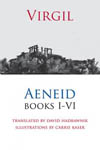
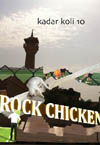
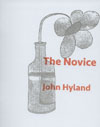


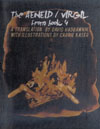
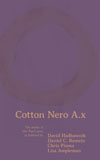
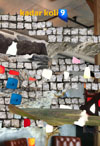
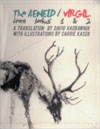
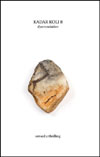
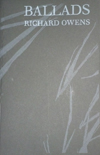
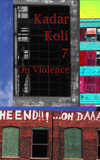
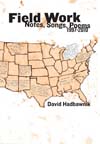
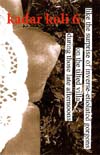
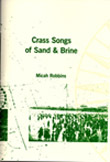

Perhaps this is stating the obvious. Isn’t form itself “content”? “The medium is the message.” For Kerouac, it mattered as much HOW he wrote *Subterraneans* as what it “said.” He was sincere, as you call it, through the form, not around the form. I think we have to find new ways to talk about this issue, in poetry especially. The phrase “form and content” is a good place to start, since it implies a separation I do not believe exists.
yes. i agree with you. but i wonder if others would. to me the proof ends up being in the simple reaction of, did i enjoy reading this? did it move me somehow? if so, the form and content must be working together in an almost seamless way. but in my current project, it’s a constant problem, because there is a level of artificiality at work. isn’t part of what kerouac wants to strip away any and all artificiality and leave only the bare utterance? no matter how ugly / unflattering it may be? i guess that’s part of the sincerity i’m referring to—now we look for ways to be sincere less directly?
Romanticism-head Kerouac wanted what you describe, I think. However, postmodern-head Kerouac was less certain of the goal. See *Big Sur,* where he pushes hard to find a path back to Emersonian unity with nature/language/meaning/Ramism, but also explicitly notes that “Jack Kerouac” is also a character.